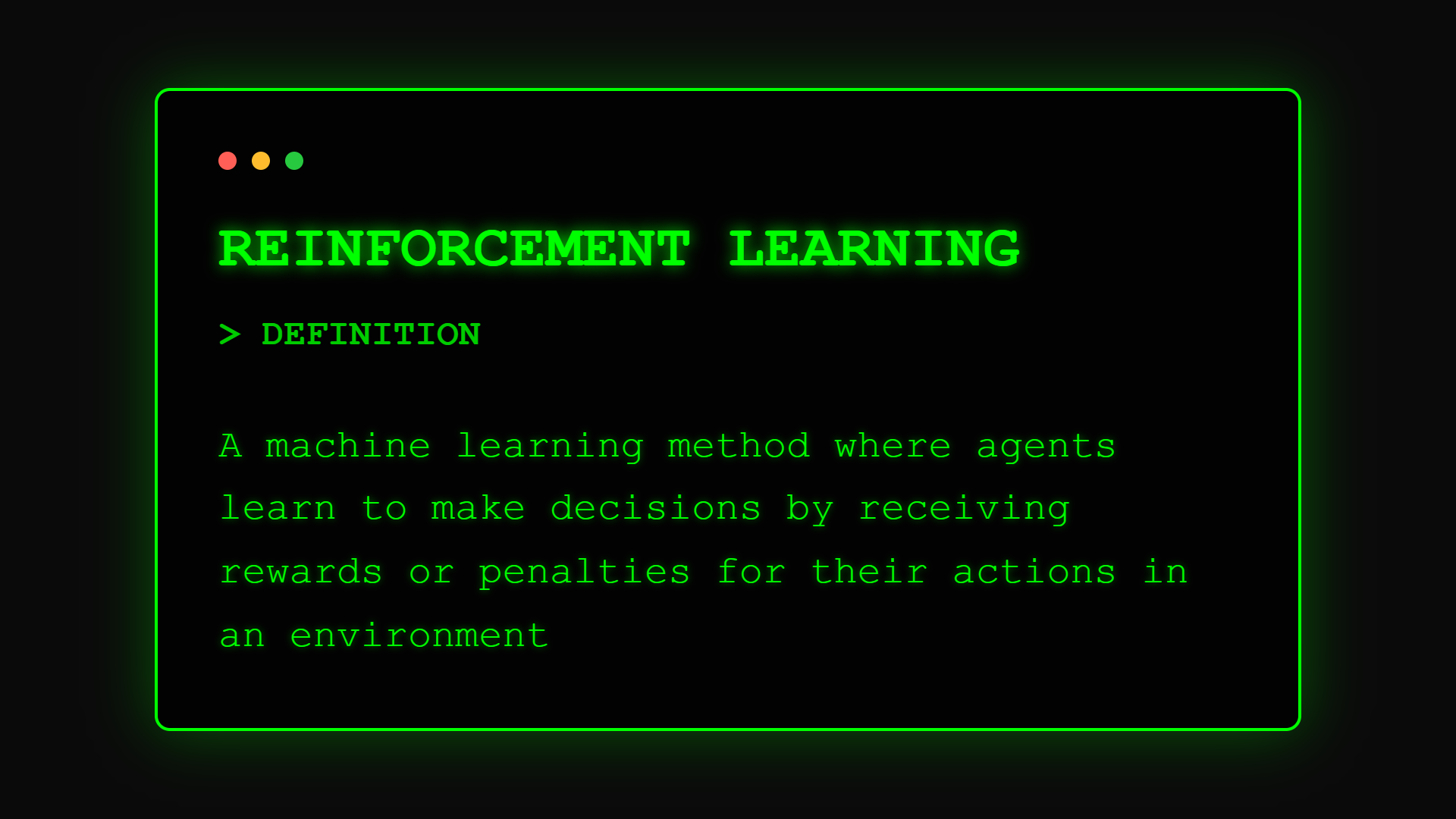AI Terms
What is Reinforcement Learning? Teaching AI Through Rewards

Remember learning to ride a bike? You tried, fell, adjusted, and tried again until you succeeded. Reinforcement learning brings this same trial-and-error approach to AI, enabling systems to discover optimal strategies through experience, often finding solutions humans never imagined.
Historical Development
Reinforcement learning emerged from behavioral psychology and optimal control theory in the 1950s. The term was formalized by Richard Sutton and Andrew Barto in their seminal 1998 book "Reinforcement Learning: An Introduction."
According to computer science literature, reinforcement learning is defined as "a type of machine learning where an agent learns to make decisions by taking actions in an environment to maximize cumulative reward." Unlike supervised learning with labeled examples, RL agents learn from consequences.
The field gained prominence after DeepMind's AlphaGo defeated world champion Lee Sedol in 2016, using reinforcement learning to discover strategies that overturned centuries of Go wisdom.
Business Application
For business leaders, reinforcement learning means AI systems that learn optimal strategies through experience, continuously improving decisions by trying different approaches and learning from results.
Think of RL as hiring a strategist who experiments intelligently. Instead of following fixed rules or copying past examples, they try different approaches, measure outcomes, and gradually develop winning strategies unique to your business.
In practical terms, this enables dynamic pricing that adapts to market conditions, supply chain optimization that handles disruptions, and personalization systems that learn individual customer preferences through interaction.
Five Key Components
Reinforcement learning consists of these essential elements:
• Agent: The AI system making decisions, like a pricing algorithm deciding what to charge or a robot deciding how to move
• Environment: The world where decisions play out, your market, warehouse, or customer base with all its complexities and uncertainties
• Actions: Possible decisions the agent can make like raise/lower prices, approve/deny applications, route shipments differently
• Rewards: Feedback signals indicating success such as profit earned, customer satisfaction scores, efficiency metrics
• Policy: The learned strategy mapping situations to actions, the "playbook" that emerges from experience
The Learning Cycle
The reinforcement learning process follows these steps:
Observation: The agent observes the current state including market conditions, inventory levels, customer behavior patterns
Action Selection: Based on its current policy (which starts random), the agent chooses an action such as adjusting price, changing route, modifying recommendation
Feedback Loop: The environment responds with a new state and reward signal, teaching the agent whether its action was beneficial
This cycle repeats millions of times, with the agent gradually learning which actions lead to better long-term outcomes, building expertise through experience.
Three Learning Approaches
Reinforcement learning generally falls into three main approaches:
Type 1: Model-Free RL Best for: Dynamic environments, real-time decisions Key feature: Learns directly from experience without modeling the environment Example: Netflix recommendation system learning user preferences
Type 2: Model-Based RL Best for: Complex planning, safety-critical applications Key feature: Builds internal model of how the world works Example: Autonomous vehicle navigation systems
Type 3: Deep Reinforcement Learning Best for: High-dimensional problems, complex strategies Key feature: Combines RL with deep neural networks Example: Google's data center cooling optimization
RL in the Real World
Here's how businesses actually use reinforcement learning:
E-commerce Example: Alibaba uses RL for dynamic pricing, adjusting millions of product prices in real-time based on demand, competition, and inventory, increasing revenue by 15%.
Logistics Example: UPS employs RL to optimize delivery routes, considering traffic, weather, and package priorities, saving 10 million gallons of fuel annually.
Finance Example: JPMorgan's LOXM system uses RL for optimal trade execution, learning to minimize market impact while maximizing execution quality, outperforming traditional algorithms by 20%.
Learn More
Ready to leverage reinforcement learning in your business?
- Understand the foundation with Machine Learning basics
- Compare with Supervised Learning approaches
- Explore Deep Learning for complex RL applications
- Implement with our RL Business Applications Guide
FAQ Section
Frequently Asked Questions about Reinforcement Learning
Part of the [AI Terms Collection]. Last updated: 2025-01-10